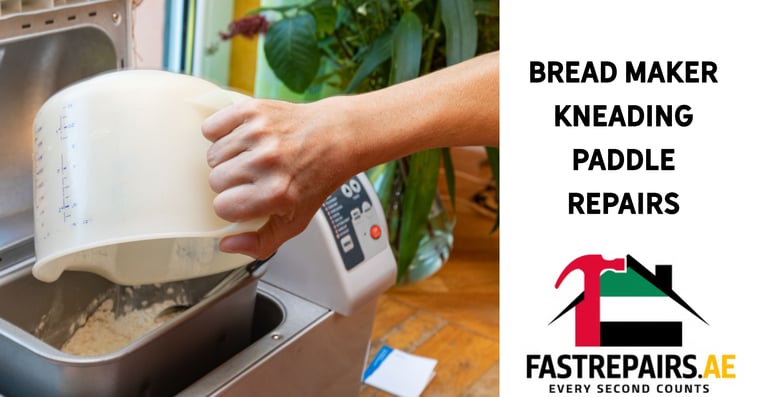Bread Maker Repairs | Fix Stuck Kneaders in Dubai
Don’t abandon homemade khubz! FastRepairs.ae fixes timers and heating elements. Contact us today to book a repair!
REPAIRS
4/15/20258 min read
Introduction to Bread Maker Repairs
In recent years, bread makers have gained significant popularity among home bakers and small bakeries in Dubai. These appliances streamline the bread-making process, allowing users to create a variety of loaves with minimal effort. By automating tasks such as mixing, kneading, and baking, bread makers save valuable time and eliminate the labor-intensive aspects of traditional bread preparation. As a result, they have become an essential tool for those passionate about baking, whether for personal enjoyment or as a professional endeavor.
Despite their convenience, bread makers are not without their challenges. Users often encounter common issues that can hinder their baking experience. Among these, the kneading paddle—an integral component of the bread-making process—frequently requires attention. The kneading paddle is responsible for thoroughly mixing ingredients and developing gluten, which is crucial for achieving the desired texture in the finished product. When this paddle becomes damaged or malfunctions, it can lead to poorly textured loaves or even complete failures in the baking process.
Understanding the significance of the kneading paddle and being aware of potential issues will help users maintain their bread makers in optimal condition. In this guide, we will delve into the common problems associated with kneading paddles, the indicators of wear and tear, and the necessary steps for effective repairs. By addressing these concerns promptly, bakers can ensure longevity and performance in their bread machines, ultimately enhancing their baking journey in Dubai's vibrant culinary scene. The following sections will provide detailed repair solutions and tips essential for both home bakers and small bakery owners.
Common Issues with Kneading Paddles
Kneading paddles are integral components in bread makers, designed to efficiently mix and knead dough. However, like any mechanical part, they are susceptible to certain issues that can hinder their performance. One of the most frequent problems encountered by home bakers and small bakeries in Dubai is the kneading paddle becoming stuck. This issue often arises when dough becomes overly dry or when recipes do not utilize enough liquid, causing the kneader to seize as the motor struggles to turn it. It is essential for bakers to ensure that the appropriate moisture levels are maintained in their dough formulations to prevent this predicament.
Another common issue is wear and tear, which can occur over time due to consistent use. Kneading paddles are subjected to significant strain during the mixing process, and cracks or signs of fatigue can develop, ultimately affecting their functionality. Inspecting the kneading paddle for irregular shapes, unusual surface textures, or even outright breaks can signal the need for immediate replacement. In addition, it is advisable to monitor the motor sounds; unusual grinding or humming can indicate a problem not just with the kneader but also with the overall bread maker mechanics.
Proper maintenance is crucial for prolonging the life of kneading paddles. Regular cleaning after each use ensures that residues do not build up and contribute to sticking or degradation of the paddle material. Lubricating moving components, when applicable, can also aid in maintaining the functionality and efficiency of the bread maker. Lastly, using the kneading paddle for its intended purpose without attempting excessive mixes or heavy doughs can further prevent damage and enhance performance. By understanding these common problems and their solutions, bakers can effectively keep their equipment in optimal working condition.
Fixing Stuck Kneading Paddles
Stuck kneading paddles are a common issue that bread makers may encounter, causing frustration for bakers in Dubai. Fortunately, addressing this problem can often be performed with simple tools and techniques. The first step is to ensure that the bread maker is unplugged to avoid the risk of electrical shock or injury while working on the device.
Start by examining the kneading paddle and the bread pan. In many cases, food residue or flour can create a bond that makes the paddle difficult to remove. A thorough cleaning may be necessary. Utilize a soft cloth or sponge with warm, soapy water to clean the surrounding area meticulously. Never use steel wool or abrasive cleaners, as these may damage the paddle or pan surface. After cleaning, rinse with water and dry thoroughly.
If the kneading paddle remains stuck post-cleaning, a gentle twist may help dislodge it. However, caution is paramount; excessive force can break either the paddle or the mechanism. Use a rubber mallet or a wooden spoon to gently tap the edges of the paddle base if twisting does not yield results. This might help break any remaining suction or adhesion.
In addition, it is beneficial to have common tools on hand, such as pliers, a spatula, or lubricant like vegetable oil. A small application of oil around the paddle's base may also facilitate easier removal in combination with twisting. To prevent future occurrences of stuck paddles, periodic maintenance should be incorporated into your baking routine. Regularly clean and inspect the kneading paddle and bread pan, ensuring no moisture or residue is left behind after use.
Lastly, always follow the manufacturer’s guidelines for your specific bread maker model. Understanding the device can prevent many common issues, making the baking process enjoyable and efficient.
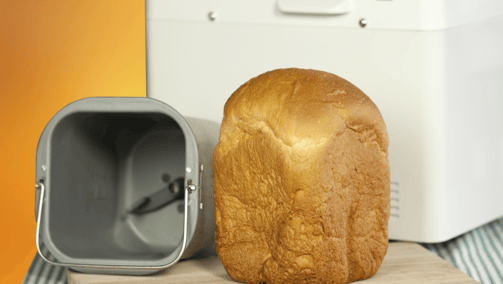

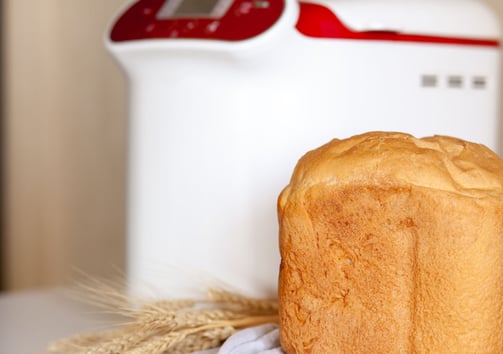

Addressing Timer and Program Malfunctions
Bread makers, an essential appliance for both home bakers and small bakeries in Dubai, sometimes encounter malfunctions related to their timer and program settings. These issues can disrupt the baking process and lead to unsatisfactory results. Identifying common symptoms is the first step in addressing these malfunctions effectively. One prevalent indicator is unresponsive buttons; when users press the timer or program buttons, the interface does not respond, making it impossible to set the desired program. Another issue might be incorrect timing, where the machine either starts too late or ends too soon, resulting in poorly risen dough or undesired textures.
To troubleshoot these problems, bakers should first check the power supply. A stable power source is crucial for the bread maker to function properly. If the device appears unresponsive, inspecting the power cord and plug for any damage is advisable. Additionally, resetting the appliance by unplugging it for a few minutes may resolve temporary glitches. If the buttons remain unresponsive after a reset, it may indicate a deeper electronic issue, potentially necessitating professional repair.
Incorrect timing issues can often be resolved by recalibrating the bread maker. Users should consult the user manual for specific instructions on adjusting the timer settings and ensuring that the machine is set to the correct local time if it has a built-in clock feature. It is also beneficial to consider the type of bread being produced; certain recipes may require adjustments to the program selections. Keeping the bread maker clean and well-maintained can prevent several malfunctions, ensuring that the appliance remains reliable for delightful baking experiences.
Diagnosing Heating Element Failures Affecting Khubz Preparation
The heating element in a bread maker plays a crucial role in the baking process, especially when preparing traditional khubz. If the heating element fails, it can lead to improper baking temperatures, resulting in poor-quality bread. One of the first steps in diagnosing heating element failures is to observe the performance of your bread maker during use. Signs of heating issues include inconsistent baking, undercooked or burnt bread, and unusual sounds emanating from the unit.
To assess the heating element, it is advisable to start by checking the internal connections for any signs of damage or disconnection. It is not uncommon for wires to become loose or frayed over time due to regular use. A visual inspection can often reveal if there are any visible issues that could be causing heating problems. If everything appears connected and intact, temperature testing becomes the next logical step.
Employing a multimeter can help in testing the resistance of the heating element. Ideally, a functioning element should register a specific resistance, typically outlined in the owner’s manual. Should the reading be significantly lower or higher than the recommended range, it indicates that the heating element may indeed be faulty. Another method involves using a thermometer to measure the temperature inside the bread maker during the preheating cycle. If it fails to reach the required temperatures, this further confirms potential heating element failures.
In instances where these testing methods reveal a defect, mild repairs—such as reattaching loose connections or replacing damaged wires—may be sufficient. However, more severe failures may necessitate a complete heating element replacement. If you are not comfortable executing repairs on your own, consulting with a professional technician is highly recommended. By properly diagnosing and addressing heating element failures, bakers can ensure successful khubz preparation and uphold the quality associated with this beloved bread.
Certified technicians with extensive experience.
24/7 emergency services.
Transparent and competitive pricing.
Let’s Get Started
Visit FastRepairs.ae or call us at +971528913379 to schedule your repair today. Experience seamless, stress-free service with FastRepairs.ae!
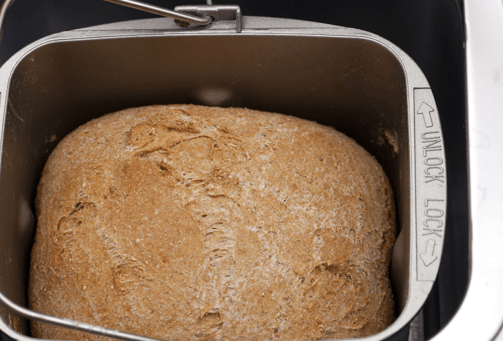

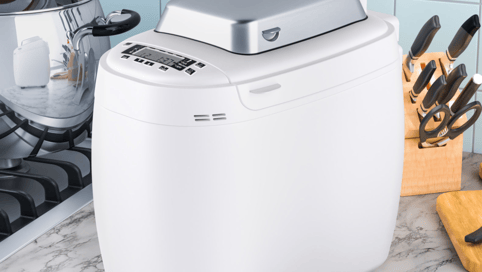

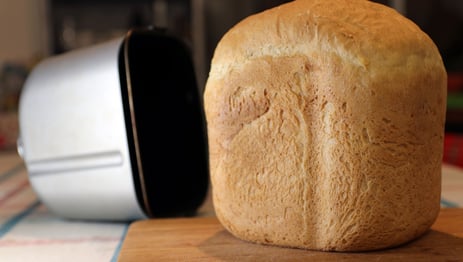



Understanding Firmware Updates for Optimal Performance
Firmware is the embedded software that provides instructions for hardware on how to operate effectively. In the context of bread makers, firmware plays a critical role in controlling various functions, including the kneading process, baking temperatures, and timing settings. Regular firmware updates are, therefore, essential for ensuring that your bread maker operates optimally and incorporates the latest improvements and bug fixes.
As technology evolves, manufacturers often release firmware updates to enhance the functionality of their products. These updates can improve the overall performance of the bread maker by introducing new features, optimizing existing ones, or fixing any operational glitches that might have been identified. For instance, an update may address issues that cause the kneading paddle to malfunction or fail to reach optimal speeds, which is particularly crucial for achieving well-kneaded dough.
Performing firmware updates safely is essential to prevent potential malfunctions. Firstly, it is important to consult the user manual that accompanies your bread maker, as it typically includes specific instructions for conducting updates. If available, downloading the latest firmware from the manufacturer's website is also advisable. Ensure that your bread maker is plugged in and be prepared for the update process, which may require maintaining a stable power supply. Additionally, avoid interrupting the update once it has begun, as doing so could lead to a corrupted firmware state.
By staying abreast of firmware updates, home bakers in Dubai and small bakery owners can significantly enhance the longevity and reliability of their bread makers. Such proactive measures not only prevent malfunctions but also ensure that your machine continually meets the demands of both casual and professional baking endeavors. Keeping the firmware current positions bakers for improved product quality and customer satisfaction.
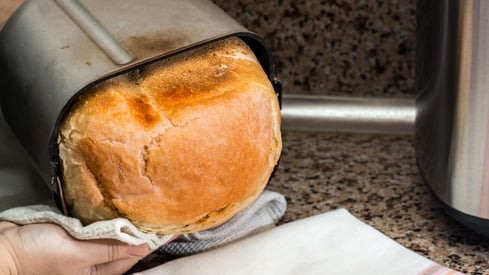

FastRepairs.ae
Reliable repair solutions for your needs.
Contact
Contact Form
contact@fastrepairs.ae
© 2024. All rights reserved.
This website is developed and managed by PranveraSolutions.
PranveraSolutions is not affiliated with fastrepairs.ae and is not responsible for any content, services, or actions of fastrepairs.ae. Any issues or legal matters should be directed to fastrepairs.ae
Hours
Monday, 9:30 am–8 pm
Tuesday, 9:30 am–8 pm
Wednesday, 9:30 am–8 pm
Thursday, 9:30 am–8 pm
Friday, 9:30 am–8 pm
Saturday, 9:30 am–7 pm
Sunday, 9:30 am–7 pm
Blog

